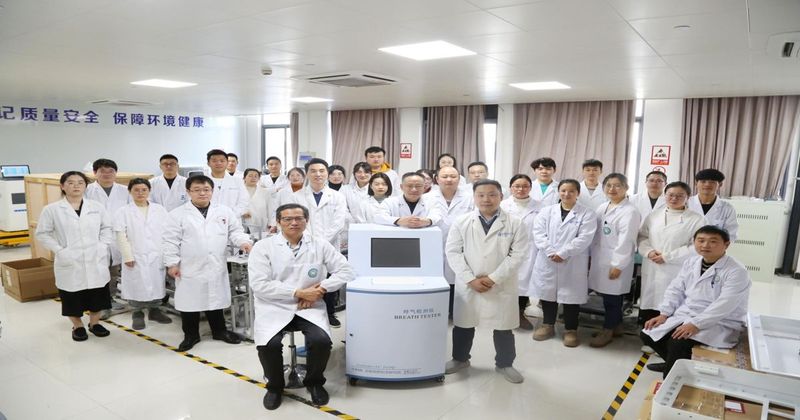Q&A: Breath test detects ventilator-associated pneumonia in minutes
A new breath test took less than 10 minutes to screen for ventilator-associated pneumonia, or VAP, in ICU patients, according to a study published in Talanta.
It typically takes more than 24 hours to learn if patients have VAP using the traditional diagnosis method of culturing samples from the lower respiratory tract, and this means a loss of valuable time that could be used for treating patients, researchers reported.

In this study, researchers used breath samples from 42 patients with VAP and 32 patients from the ICU who were uninfected to see if their proposed breath tester, a proton transfer reaction-mass spectrometry (PTR-MS) instrument, could detect VAP quicker using exhaled volatile organic compounds (VOCs) than the standard method. Researchers also assessed which VOCs could be used to screen for VAP.
Results showed this method discovered the ions that signal the presence of VAP in patients and took less than 10 minutes. The PTR-MS instrument was associated with 71.4% sensitivity and 84.4% specificity, according to researchers.
Additionally, by comparing the exhaled VOCs from patients with VAP to the VOCs released by five major pathogens (Pseudomonas aeruginosa, Klebsiella pneumoniae, Acinetobacter baumannii, Escherichia coli and Stenotrophomonas maltophilia) that researchers cultured from patients with VAP, researchers found that exhaled acetaldehyde could be used in screening patients for VAP.
Healio spoke with Chengyin Shen, PhD, professor from Hefei Institutes of Physical Science at the Chinese Academy of Sciences, to learn more about VAP, the PTR-MS instrument and study outcomes.
Healio: How prevalent is VAP?
Shen: VAP is the most common type of nosocomial infection in the ICU. The incidence rate is about 5% to 40%, and mortality is about 10%.
Healio: Why is it difficult to diagnose using traditional methods?
Shen: The diagnosis of VAP in the clinic still depends on the culture and identification of microorganisms from the lower respiratory tract samples of suspected patients, which takes about 1 to 3 days. The initial anti-infection plan can only rely on the experiences of doctors, which may cause antibiotic abuse and failure of initial treatment.
Healio: What was the rationale behind achieving a new diagnosis/rapid screening method for VAP using exhaled VOCs?
Shen: Bacteria can release different VOCs, and these VOCs can be excreted through breath. This means that the exhaled VOCs have the potential to be used for screening VAP.
Healio: What is the PTR-MS instrument and how does it work?
Shen: The PTR-MS is a fast (second level) and highly sensitive (pptv-level) instrument for detecting VOCs. It has been applied in environmental monitoring, medical research, public safety and food inspection. The PTR-MS consists of a glow discharge ion source, a drift tube and quadrupole mass spectrometer (QMS). Oxonium (H3O+) reagent ions are generated in the ion source by glow discharge with the water vapor and are then injected into the drift tube. When the sample gas is introduced to the drift tube, VOCs can undergo proton transfer reactions with H3O+ if they have proton affinity values higher than that of H2O (691 kJ/mol). After being passed through a differentially pumping intermediate chamber, the product ions and reagent ions (H3O+) at the end of the drift tube are introduced into the vacuum chamber and detected by the QMS.
Healio: What are the main takeaways of your study?
Shen: We developed a rapid and noninvasive screening method for VAP infection. The collection and detection of each sample took less than 10 minutes, which could possibly assist doctors in making treatment strategies in time and improve the survival rate of infected patients.
References:
- Researchers screen for ventilator associated pneumonia infection through breath test. https://english.hf.cas.cn/nr/rn/202211/t20221115_323994.html. Published Nov. 24, 2022. Accessed Nov. 28, 2022.
- Xu W, et al. Talanta. 2022;doi:10.1016/j.talanta.2022.124069.
